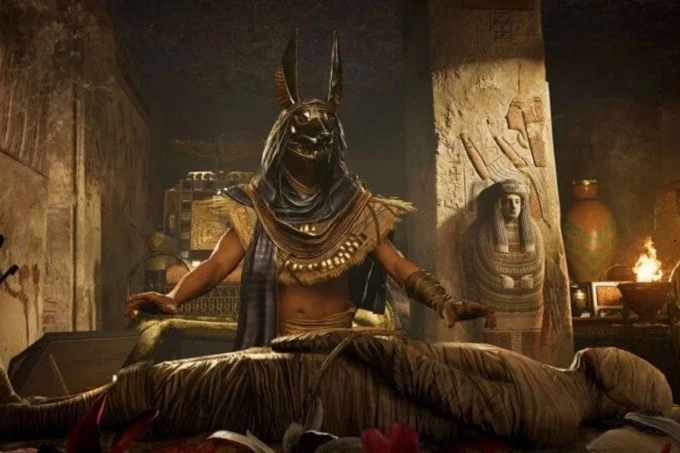According to historians, ancient Egypt had at least 5,000 gods. The fact that each area had its own deities, according to scientists, explains their huge number, and each of them had a distinct role. Some were in charge of the crop, while others helped the Egyptians win battles, while yet others transported the deceased to the afterlife. The Egyptians were convinced that they would suffer if the gods were unhappy with them. That is why, like many other ancient civilizations, they offered sacrifices to the gods.
Egyptians sacrificed a wide range of animals, including cats for some and whole other live creatures for others. Even persons have been sacrificed in the past. I suggest that we learn how Egyptian sacrifices were performed and who took part in them within the context of this material. There were specific regulations that had to be followed while using live animals as victims.
Egypt’s sacrifices
In Egypt, sacrificial rites were performed in a variety of ways. Egyptians would sometimes just light incense. When burnt, resins with this name generate a nice odor. A similar rite was performed and is still practiced in several countries.
Some people think that lighting incense makes the gods favor them more. The ancient Egyptians really believed in this as well, and in certain situations, sacrifices were carried out in this manner, in the most gentle manner possible.
But, in most instances, the sacrifices seemed to be quite heinous – at least, that’s how contemporary people would interpret them. Sacrifices were made on specific altars, sometimes known as altars, where sacrifices were made.
Living animals were sometimes simply bled to death, while in other situations, they were burned on the fire. The skulls of the majority of them were severed, and dreadful curses were read over them. The heads were then either sold to Greek merchants or sent sailing on the Nile River. Animal heads were never utilized as food by the Egyptians. An intriguing fact: the expression “a curse on your head” may have originated as a result of Egyptian rites.
Human sacrifices were uncommon, and people became used to them over time. Blood altars were initially constructed outside of cities. Blood sacrifices became the norm only later, due to the priests who performed the ceremonies. That is, according to certain scientific papers.
Offerings to the gods
Scientists already know who the Egyptians sacrificed and why they did so. They uncovered the mummies of a large number of birds, cats, and other creatures during the archaeological digs. Many gods with animal heads may be seen in the Egyptian pyramids’ images. As a result, each god requested a certain sort of life being as a sacrifice.
Cats
Cats were regarded as holy creatures by the Egyptians, despite the fact that they were sacrificed. They were usually made for Bastet, the goddess of gladness, who was represented as a man with a cat’s head. Temples were used to grow cats for sacrifice. They were turned into mummies and set on the altar after a period of time.
At the same time, cats were regarded as one of Egypt’s most valuable animals, and any motorist who accidentally drove over one was stoned to death. The owners also shaved their brows in honor of the deceased cat.
Calves and bulls
Bulls and calves were regarded differently by the Egyptians. Usually, these creatures were offered to Isis, the goddess of maternity. Only animals with flawlessly light skins were fit to be sacrificed. It was deemed ruined if there was even a speck on the flesh.
Most likely, the owners of such “defiled” animals were overjoyed since their livestock stayed with them. For the sake of simplicity, the corpses of animals were burnt after a particular ritual. As previously stated, the decapitated heads were sent sailing down the Nile River.
Birds
The scholarly journal Scientific Reports just published an article on how the Egyptians sacrificed birds. Archaeologists have discovered millions of mummies of different birds over the course of decades of digs. But most importantly, ibis birds, of which there were plenty in ancient Egypt’s realm, were sacrificed. Because their number was substantially decreased during ancient ceremonies, they are now very uncommon.
The birds were usually meant for the gods Thoth, Ra, and Horus, who were simply represented with bird heads. The Egyptians collected them in the wild; if they were adequately produced, the insides would include the leftovers of the same meal that the Egyptians ate. The food leftovers within the mummies were also different.
Sacrifice of humans
Human sacrifices were carried out in Egypt, and this is not a lie. Pharaohs, the rulers of ancient Egypt, were gods in human form. People believed that all the kings had should accompany them to the afterlife. The pharaohs, on the other hand, had not just jewelry but also personal servants. As a result, when a king died, his attendants sacrificed themselves and perished as well.
The conviction that there is another life beyond death aided them in making their decision. Several hundred servants’ remains were discovered in Pharaoh Khor Ah’s burial chamber. Suffocation killed males between 20 to 25 years old, according to archaeologists.
